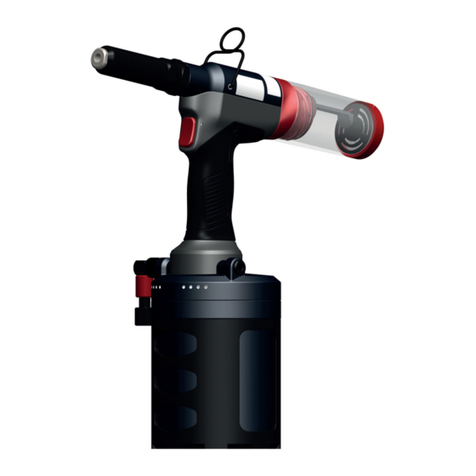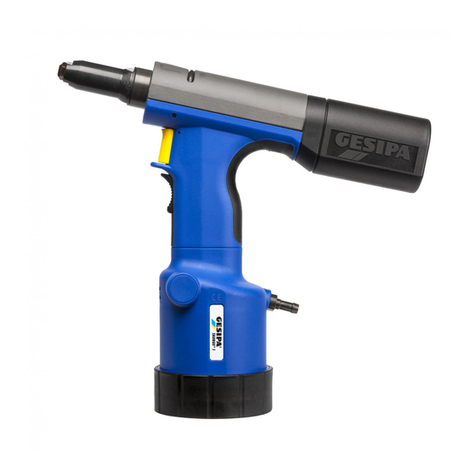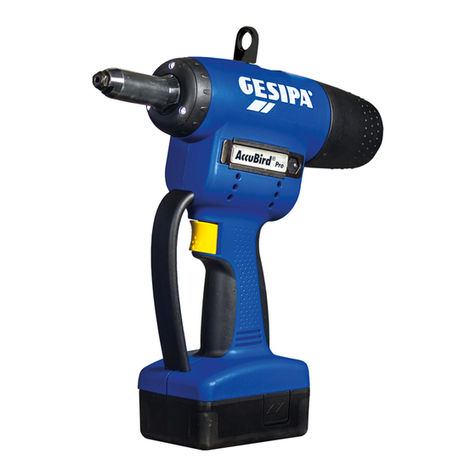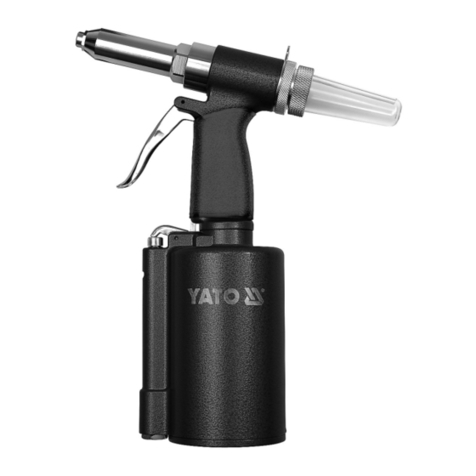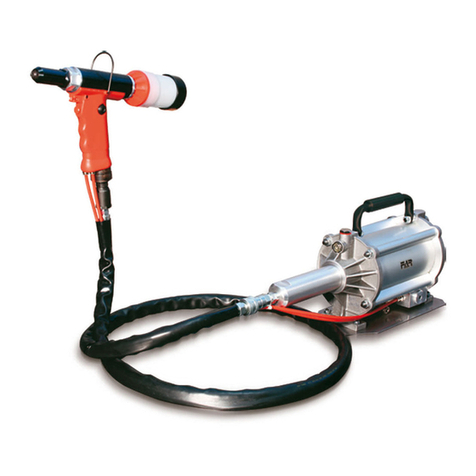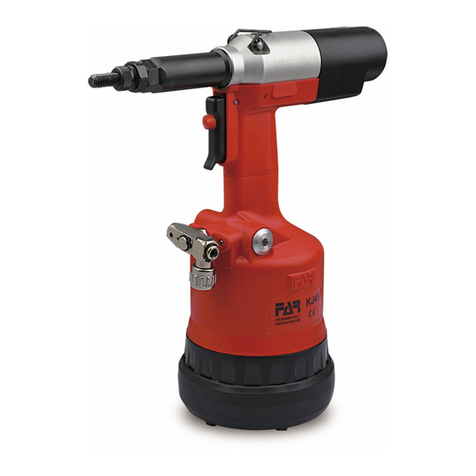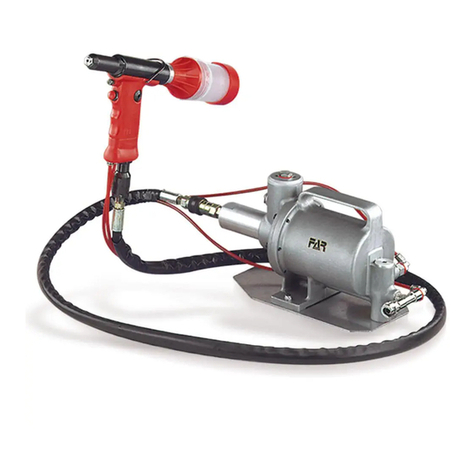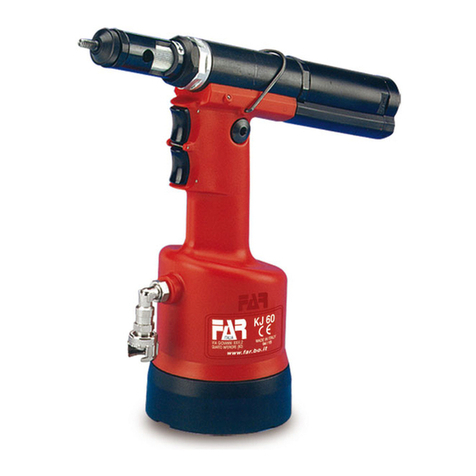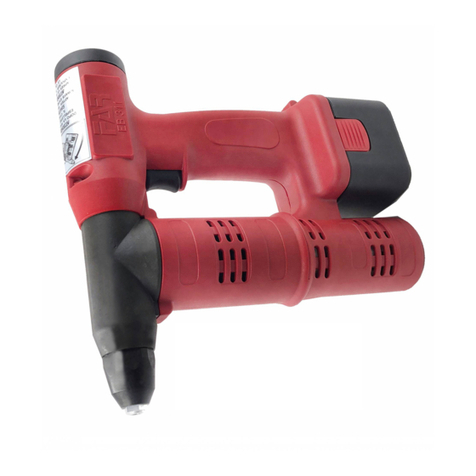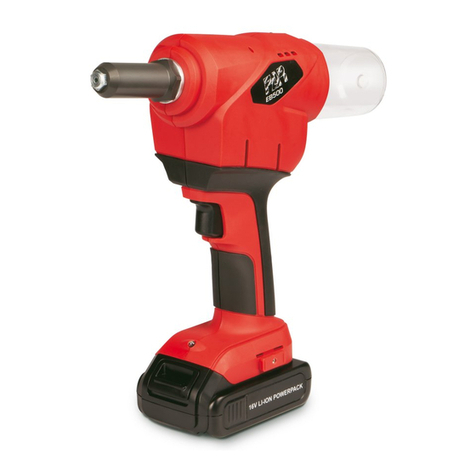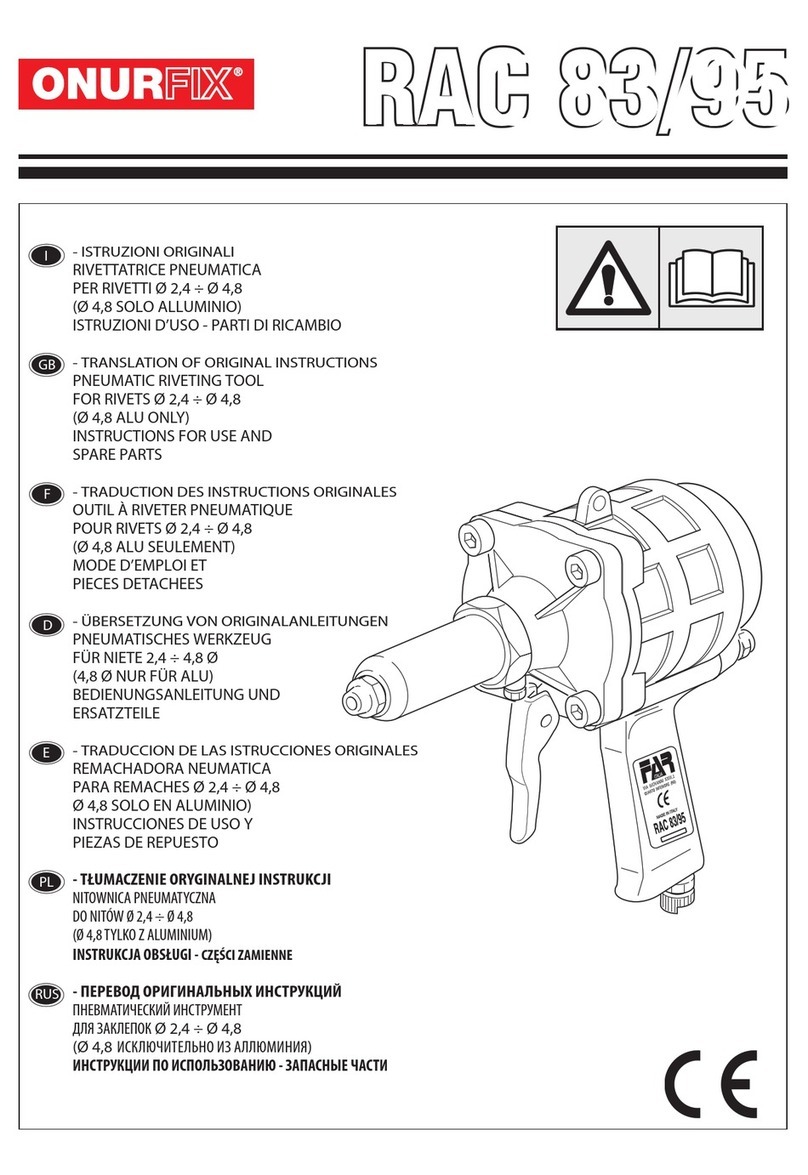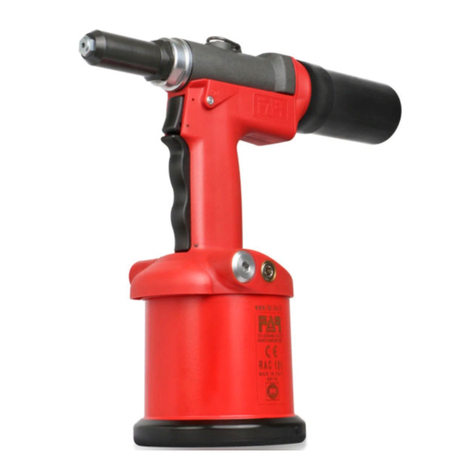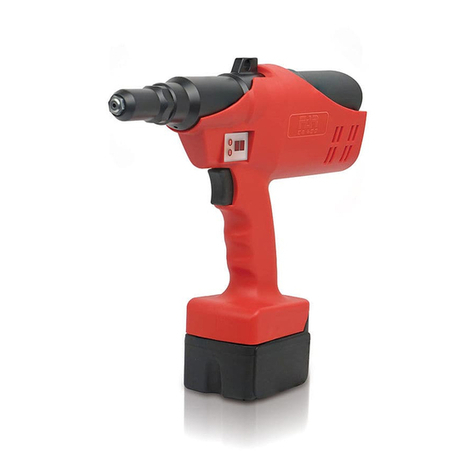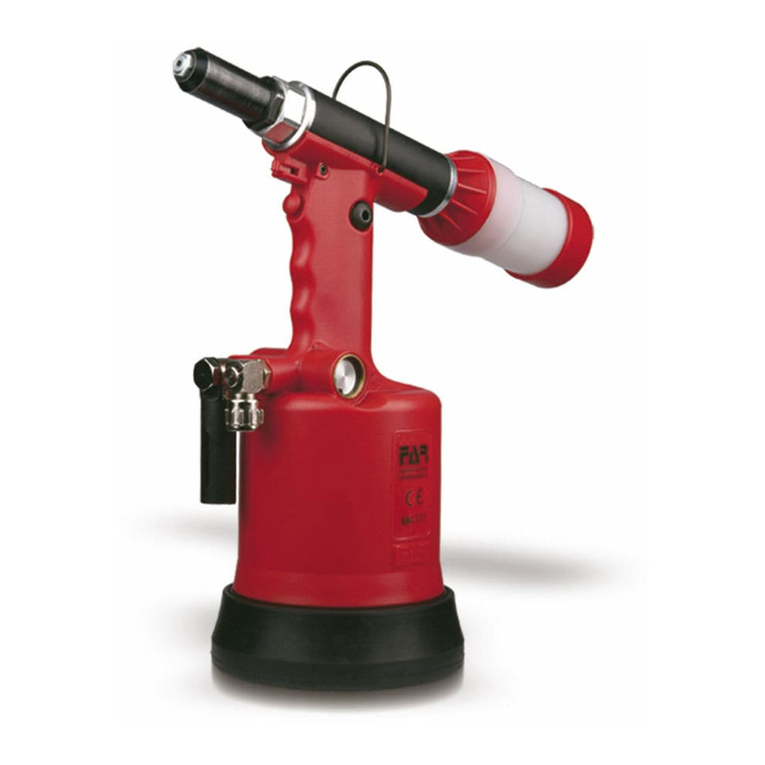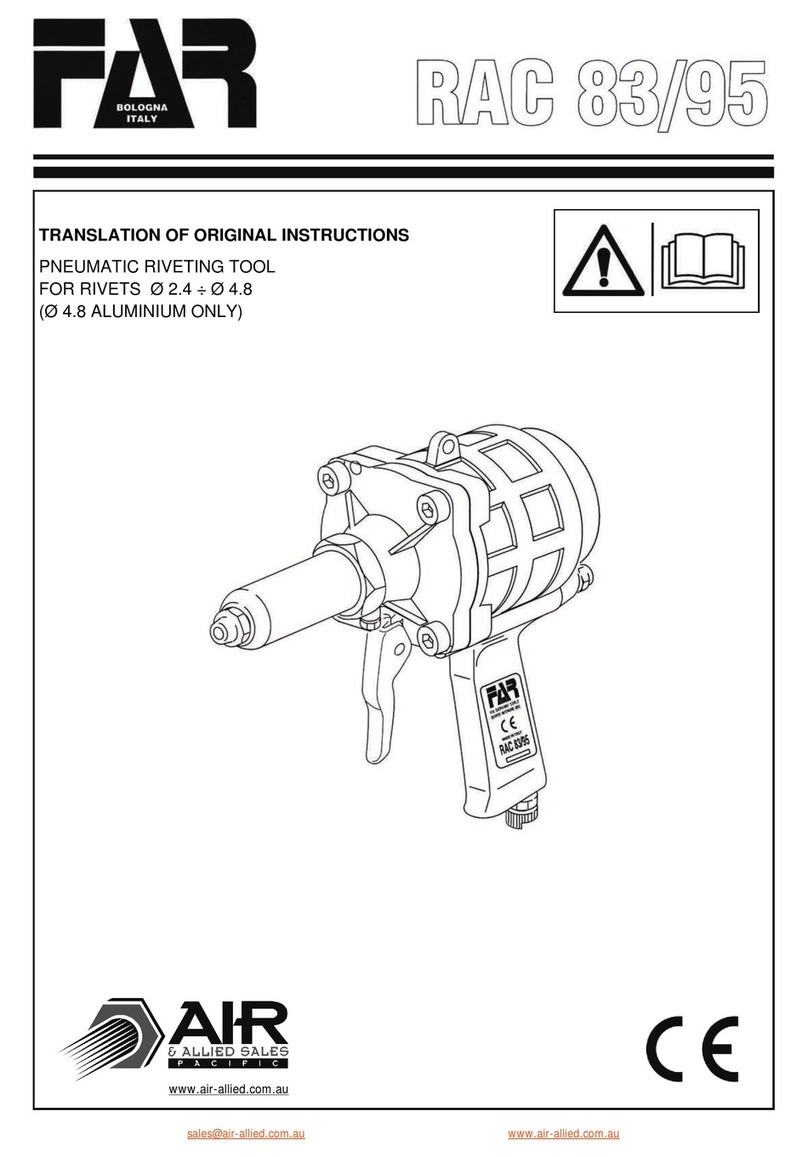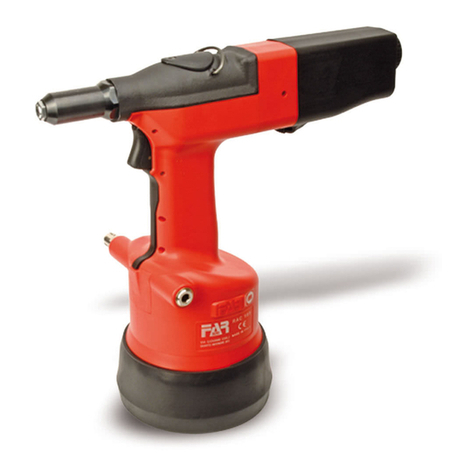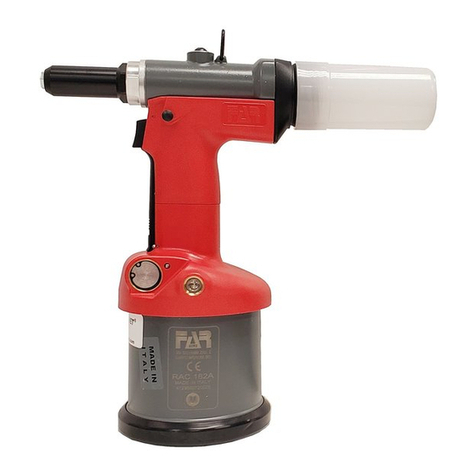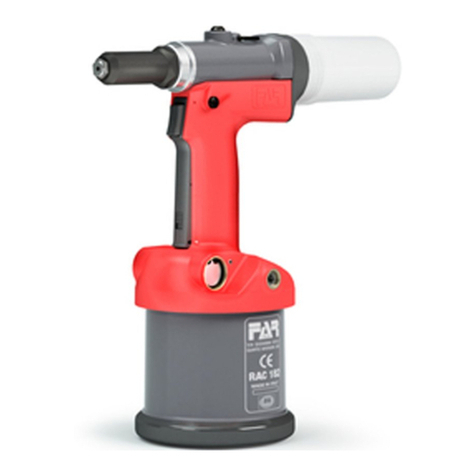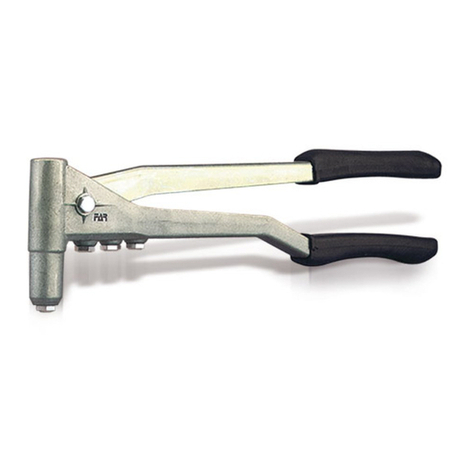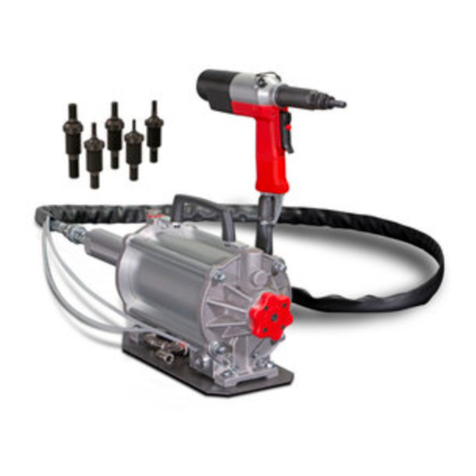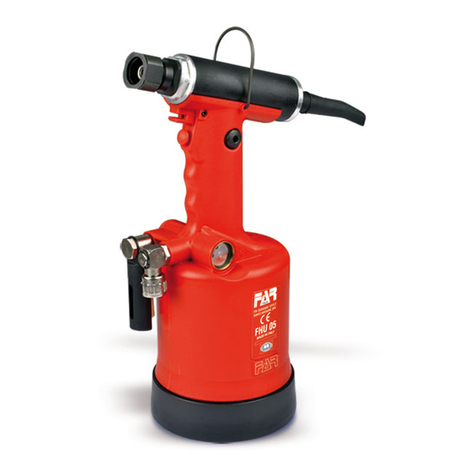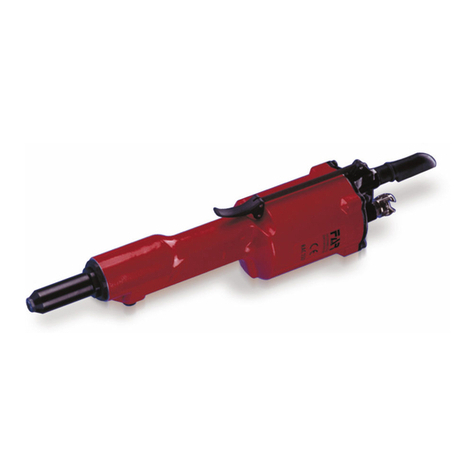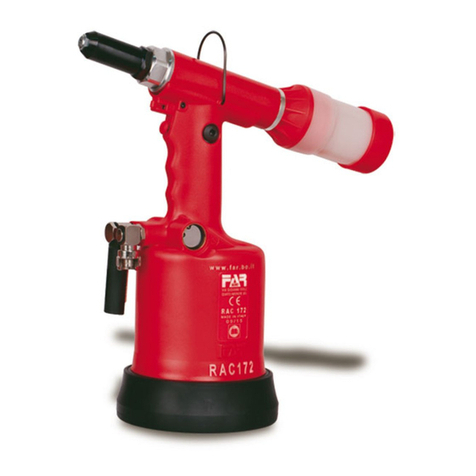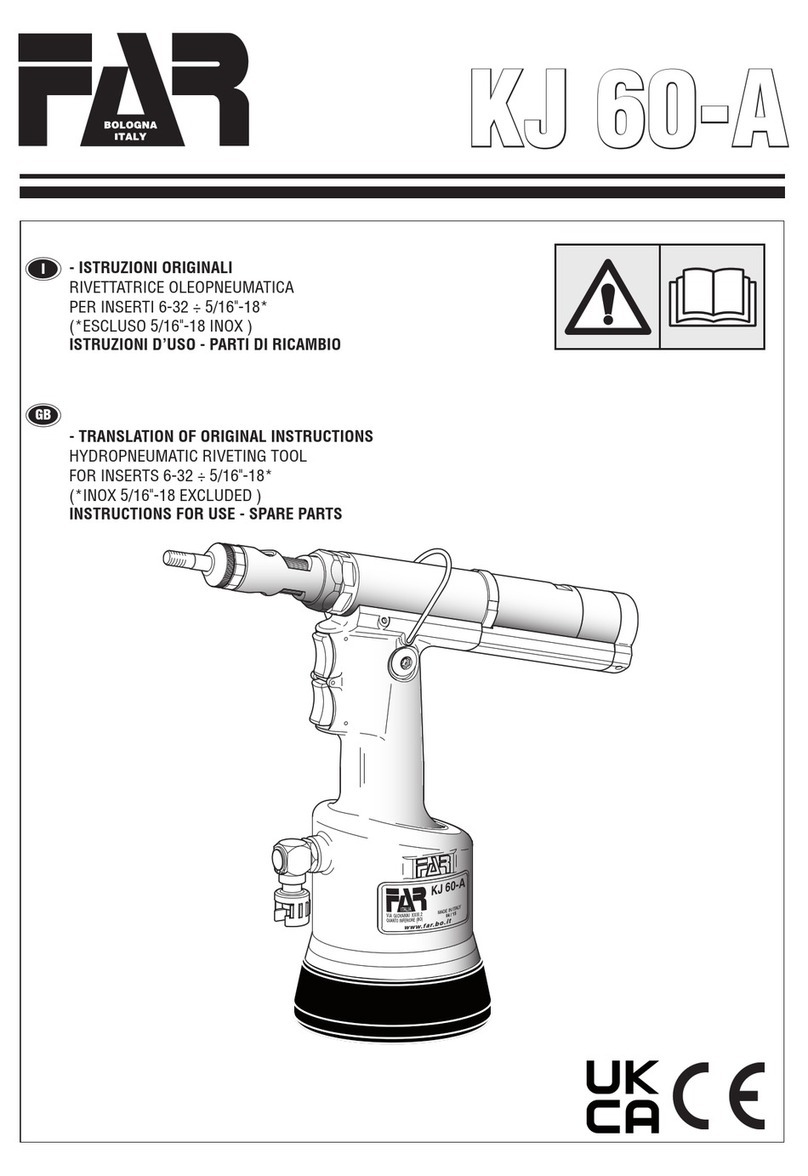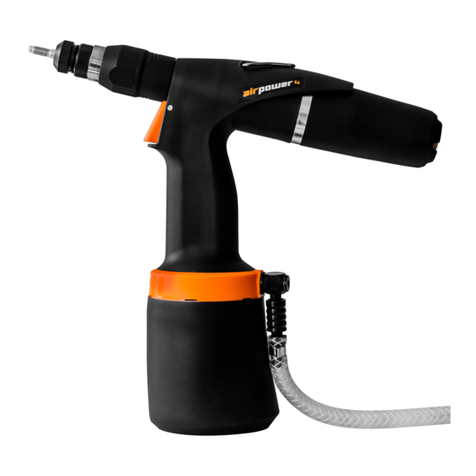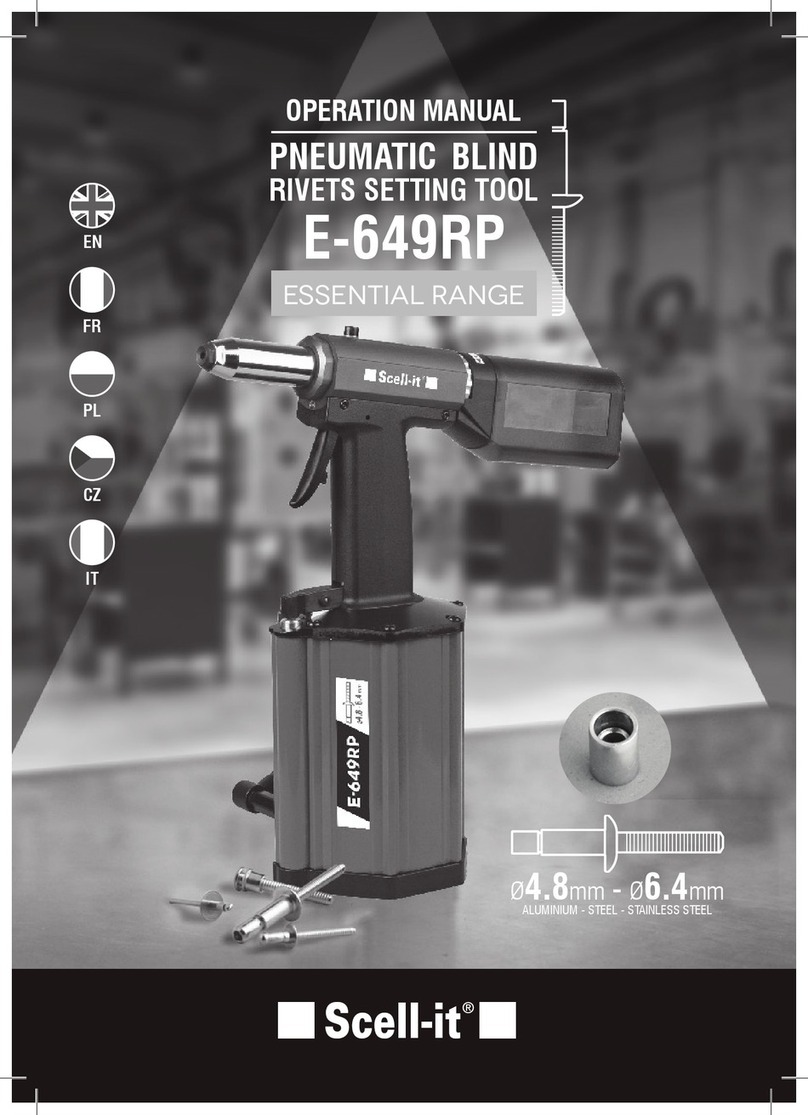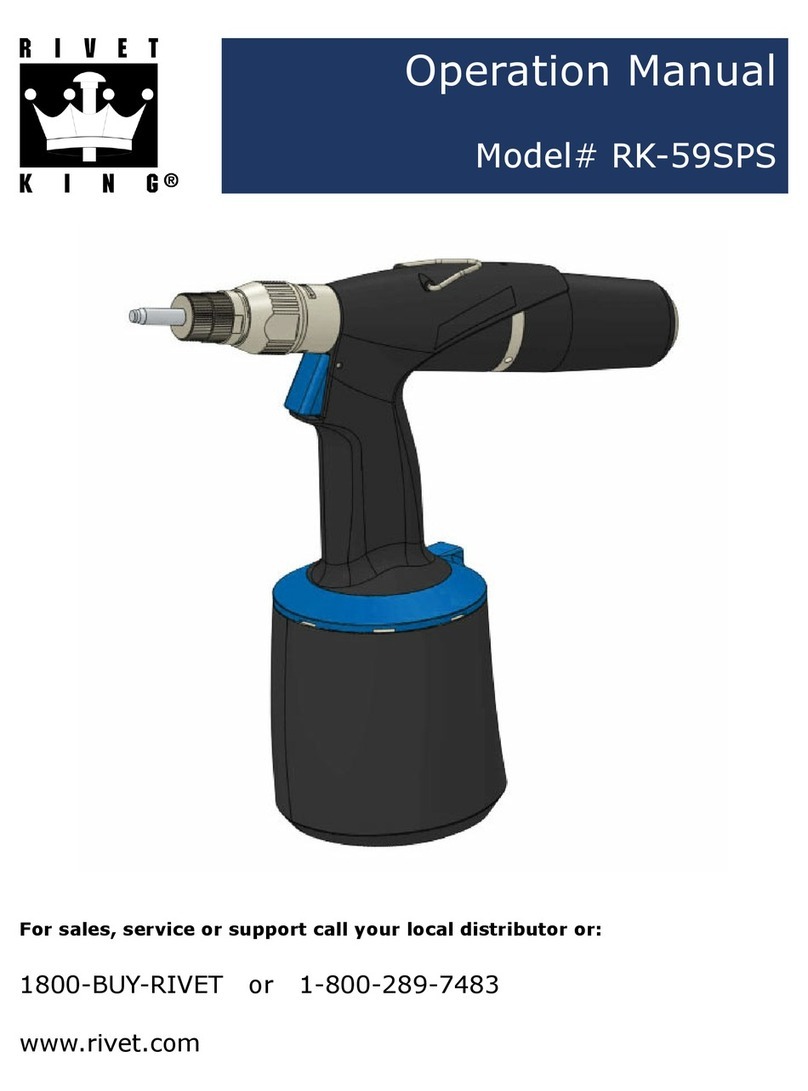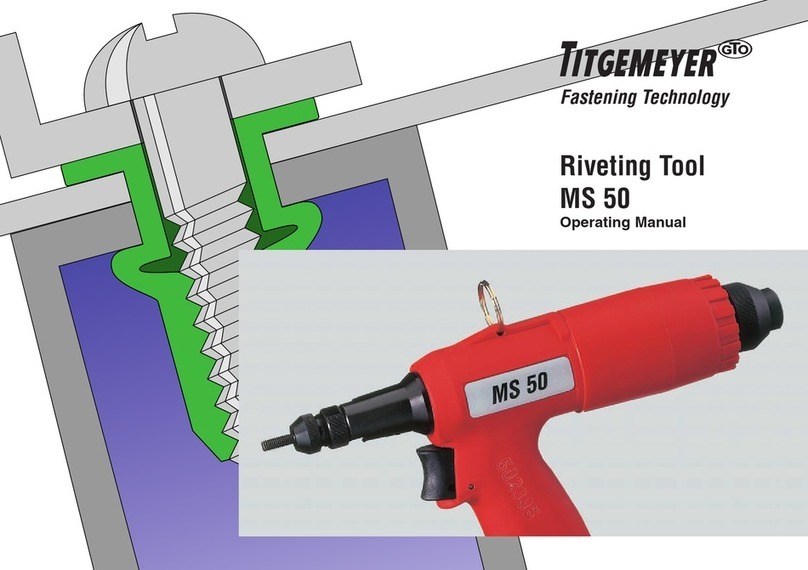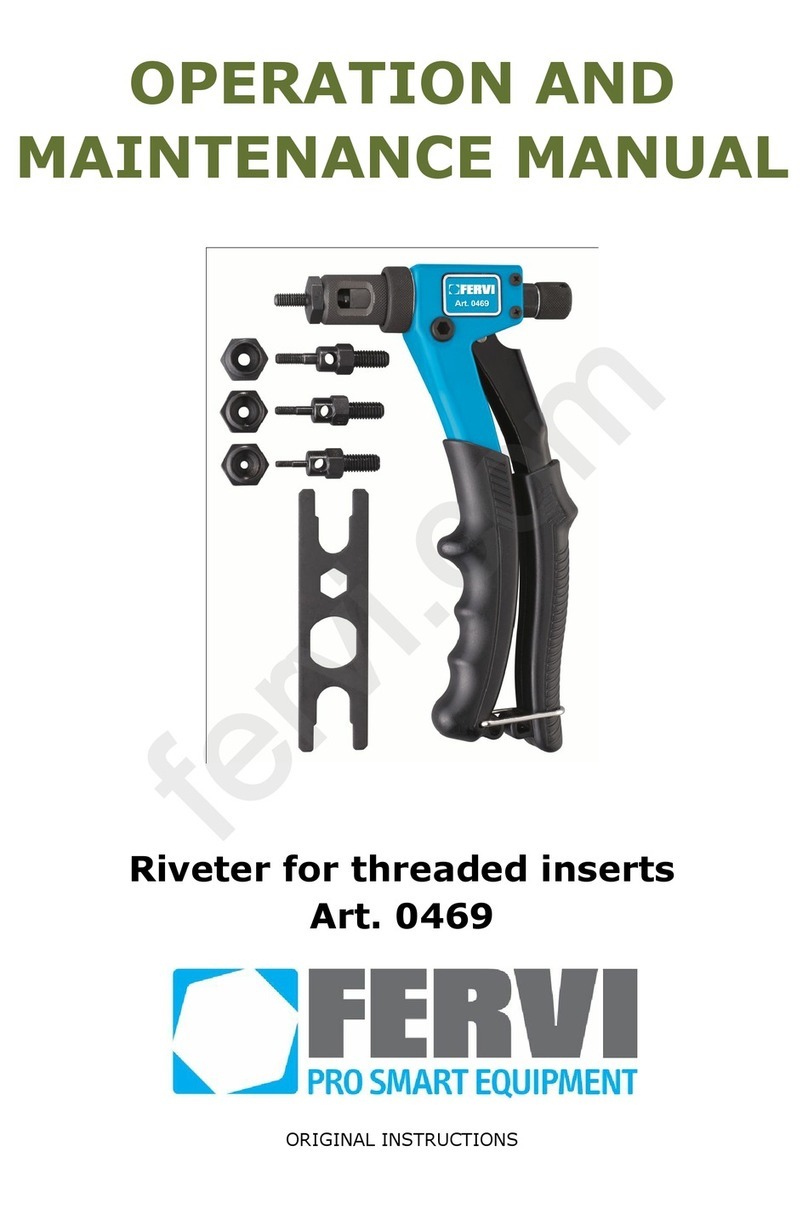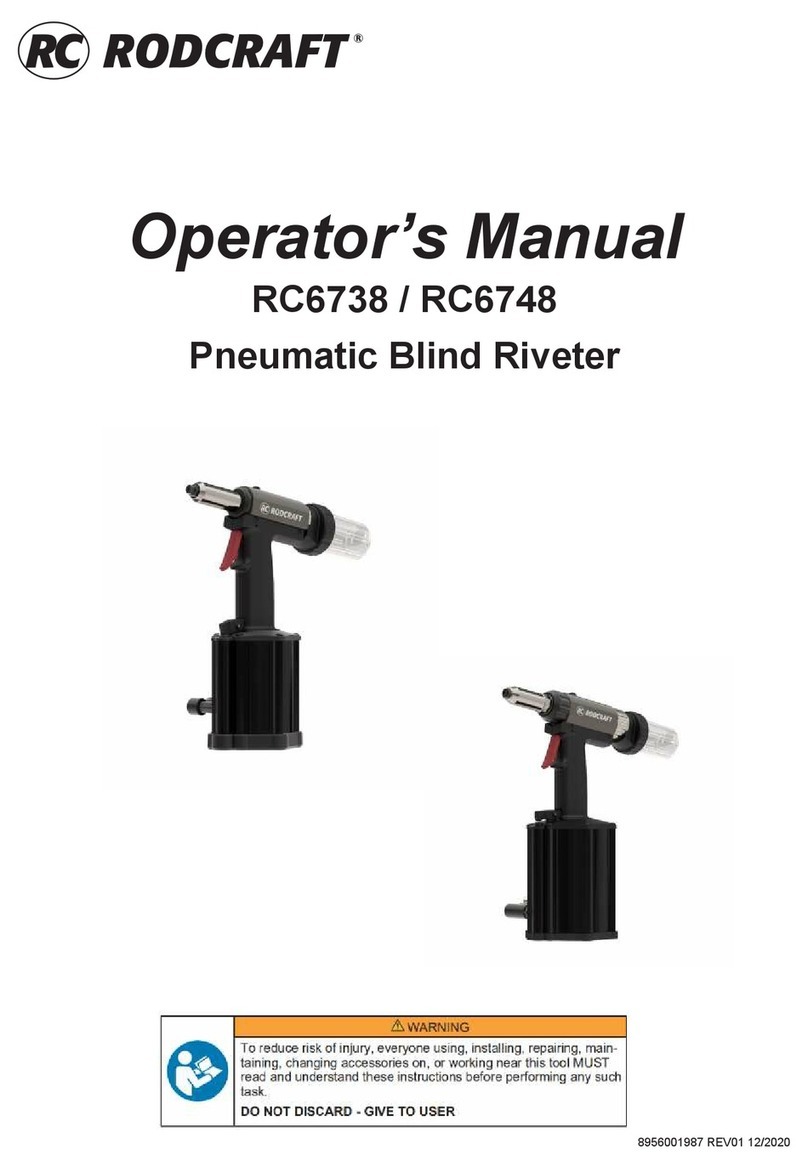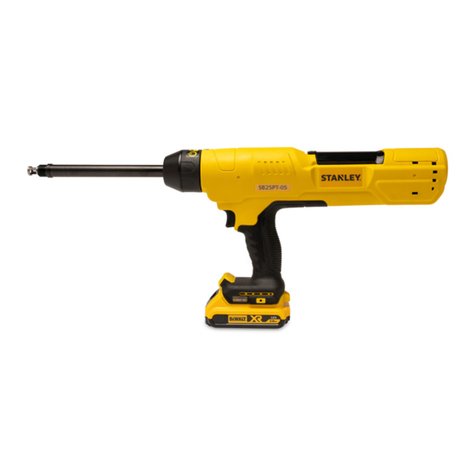
La sottoscritta Far S.r.l., con sede in Quarto Inferiore (BO)
alla via Giovanni XXIII n° 2,
DICHIARA
sottola propria esclusiva responsabilitàche la rivettatrice
Modello:
RAC 171 - Rivettatrice oleopneumatica
Utilizzo:perrivettidiam.4,8
÷
7,8(4,8esclusoalluminio)
alla quale questa dichiarazione si riferisce è conforme ai
requisiti essenziali di sicurezza previsti dal D.Leg.vo 17.2010 di
recepimento della Direttiva Macchine 2006/42/CE e successive
modificazioni ed integrazioni.
La persona autorizzata a
costituire il fascicolo tecnico risponde al nome di Giacomo
Generali, presso la Far S.r.l., con sede in Quarto Inferiore
(BO) alla via Giovanni XXIII n° 2.
The undersigned Far S.r.l., having its office in Quarto Inferiore
(BO), Via Giovanni XXIII No. 2, herewith
DECLARES
on its sole responsability that the riveting machine
Type: RAC 171 - Hydropneumatic tool Application:for
rivets diam. 4,8
÷
7,8 (4,8 alu excluded)
which is the object of this declaration complies with
the basic safety requirements estabilished in the law
decreeLeg.D.17/2010of MachineryDirective2006/42/
CE acknowledge and subsequent amendments and
integrations.
The person who is authorized to create the
technical brochure is Giacomo Generali, c/o Far S.r.l., head
office in Quarto Inferiore (BO), via Giovanni XXIII n. 2.
La société Far S.r.l. soussignée avec siège à Quarto Inferiore
(BO), Via Giovanni XXIII n° 2,
DECLARE
sous sa seule responsabilité que la riveteuse
Modèle: RAC 171 - Pistolet oléopneumatique Utilisation: pour
rivets diam. 4,8 ÷ 7,8 (4,8 sauf aluminium)
à laquelle cette déclaration se rapporte est conforme aux
conditions essentielles de sécurité requises par la loi 17/2010
d’acceptation de la
Directive Machines 2006/42/CE et modifications et intégrations
successives.
La personne autorisée à constituer le dossier
technique est Giacomo Generali chez FAR S.r.l., avec siège
à Quarto Inferiore (BO) – Via Giovanni XXIII. n.2
Die Unterzeichnete, Fa. Far S.r.l., mit Sitz in Quarto
Inferiore (BO), Via Giovanni XXIII Nr. 2,
ERKLÄRT
hiermit auf ihre alleinige Verantwortung, daß die
NietmaschineTyp: RAC 171 - Hydraulisch-pneumatisches
Nietwerkzeug Anwendung: für Blindniete mit Durchmesser
4,8 (ausschliesslich aus Aluminium) bis 7,8
auf das sich diese Erklärung bezieht, den wesentlichen
Sicherheitsanforderungen des Gesetzesdekrets 17/2010
von Umsetzung der Maschinenrichtlinie 2006/42/CE und
dennachfolgendenÄnderungenundAnfügungenentspricht.
Der Berechtigte zur Bildung der technische Broschüre ist
Giacomo Generali, bei der Firma Far S.r.l., mit Sitz in Quarto
Inferiore (BO), via Giovanni XXIII Nr. 2.
La firmataria Far S.r.l., domiciliada en Quarto Inferiore (BO) en
via Giovanni XXIII n° 2,
DECLARA
bajo su exclusiva responsabilidad que la remachadoraModelo:
RAC 171 - Remachadora oleoneumática
Empleo: para remaches diam. 4,8 ÷ 7,8 (4,8 excluído aluminio)
a la cual la presente declaración se refiere corresponde a los
requisitos esenciales de seguridad previstos por el D.Lay
17/2010 de recepción de la Directiva Maquinas 2006/42/CE y
sucesivasmodificaciones e integraciones.La persona autirizada
a constituir el fasciculo tecnico es Giacomo Generali, cerca FAR
S.r.l., con sede a Quarto Inferiore (BO) – Via Giovanni XXIII n.2.
Firma FAR S.r.l z siedzibą w Quarto Inferiore (Włochy),
Via Giovanni XXIII,2
DEKLARUJE
iżnitownicapneumatycznaTyp:RAC171donitówwzakresie4,8÷7,8mm
(4,8 )
do której odnosi sie niniejsza deklaracja, jest zgodna z
wymogami bezpieczenstwa przewidzianymi przez dekret
legislacyjny17/2010implementujacyDyrektyweMaszynowa
2006/42/WEwrazzpózniejszymizmianamiiuzupelnieniami.
“Osobaupoważnionadoutworzeniadokumentacjitechnicznej
toGiacomoGeneralizrmyFarS.r.l.mającejsiedzibęwQuarto
Inferiore (BO), via Giovanni XXIII nr 2”.
ee Far S.r.l., Quarto
Inferiore (BO) . Giovanni XXIII, 2,
c ,
:RAC171 –
: 4,8 ÷ 7,8
(4,8 )
,
17/2010
2006/42/CE .
(Giacomo Generali),
FarS.r.l., :
, (), XXIII, . 2..
I
GB
F
E
D
PL
RUS
Quarto Inferiore, 23-03-2010
Far S.r.l. - Giacomo Generali
(Presidente del Consiglio di Amministrazione)
(Chairman of the Board of Directors)
(Président du Conseil d’Administration)
(Vorsitzender des Verwaltungsrates)
(Presidente del Consejo de Administración)
(Prezes Zarzadu)
( )
.............................................
